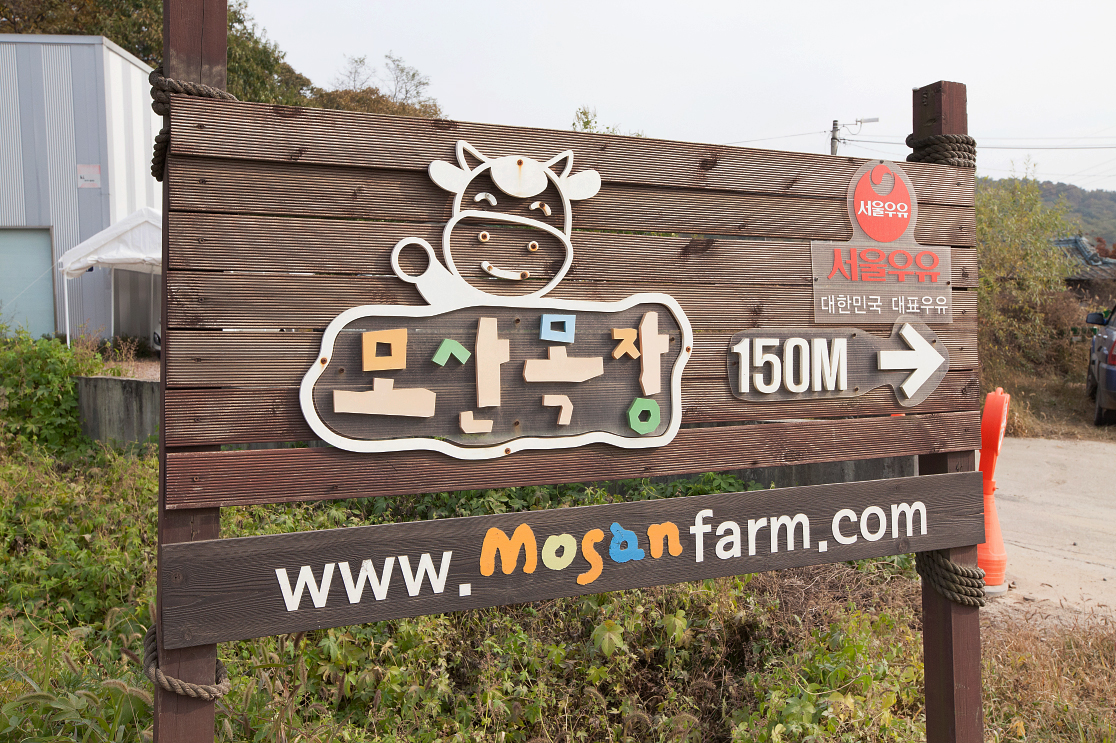저희 모산목장은 젖소를 키우고 어린이들에게 젖소체험을 제공해주고 있는 낙농체험목장입니다.

모산목장이 추구하는 기본원칙은 우유의 소중함을 많은
소비자에게 제대로 알리는 것입니다.
이를 위해 목장의 구조도 언제든 찾아와 배우거나 쉬어갈 수
있도록 만들었습니다.
아이들에게 시골의 정겨움을 느끼도록 쉽게 동물을 만져보고
느낄 수 있는 체험프로그램으로 어미소젖 짜보기, 송아지
우유주기, 소 먹이주기 등을 체험해볼 수 있으며, 젖소 외에도
흑염소, 사슴, 닭, 오리, 토끼와 같은 동물도 만나볼 수 있습니다.
인사말 행복한 체험 낙농체험 모산목장입니다.

산들바람 그리고 우리 목장의 주인인 젖소, 염소, 토끼 동물 친구들과 함께 어느덧 모산목장도 10년이 지나갔습니다.
10여 년 동안 목장은 새로운 삶이 시작하고 지나가면서 많은 변화가 생겼지만, 목장 동물 친구들과 자연은 있는 그대로의 모습으로 살아가고 있습니다.
목장 이전과 함께 삶의 터전도 바뀌면서..
목장 안에서의 계절의 변화를 보면서 마음의 평화와 안정을 느끼게 되었습니다.
자연과 동물 친구들과 함께 한 시간이 얼마나 아름답고 소중한지 알게 되었던 시간이었지요.
봄이 오면 봄이 왔다고 제일 먼저 알려주는 노란 복수초, 철철이 옷을 갈아입는 산속나무 친구들.
몇 마리 없었던 토끼는 토끼 군단을 유지하게 되었고,염소 부부는 염소 가족을 만들었답니다.
얼마나 아름다운 일인지..
목장의 삶은 소소한 행복을 주고 있습니다.
소소한 행복을 우리 가족들과 함께 나누고 싶습니다.
도시 속에서 지친 마음을.. 바쁜 우리의 몸과 마음을 자연에서 치유하며 힐링하는 것은 어떤지요.
자연을 해치지 말고 자연과 함께 동화되어 마음속 평화를 우리 아이들에게 전해주었으면 하는 바램입니다.
그동안 모산목장을 찾아주신 엄마, 아빠 어린 꼬마친구들. 너무 감사합니다.
우리 목장에서 즐거움을 찾는 여러분의 모습을 보며 자연과 더불어 성장해 가는 모산목장이 되도록 노력하겠습니다.
대표이사

목장별 시설별 사진을 볼 수 있습니다.



















목장으로 쉽게 찾아오실 수 있는 교통편 안내입니다.
| 대표자 | 문진섭/김금산 | 대표전화 | 010-7176-6480 |
|---|---|---|---|
| FAX | 031-942-6480 | azoomssi@hotmail.com | |
| 주소 | 경기도 파주시 탄현면 검산로519번길 6-36 (축현리 349) | ||
| 오시는 길 | 자유로(문산방면)▶ 통일동산(성동IC)▶ 성동사거리좌회전(헤이리방향)▶ 계속직진▶ 막다른삼거리 우회전 (탄현면사무소) ▶ 직진 탄현축산물 (정육점)끼고 좌회전▶ 탄현중학교정문지나서 우회전▶ 모산목장 |
||



